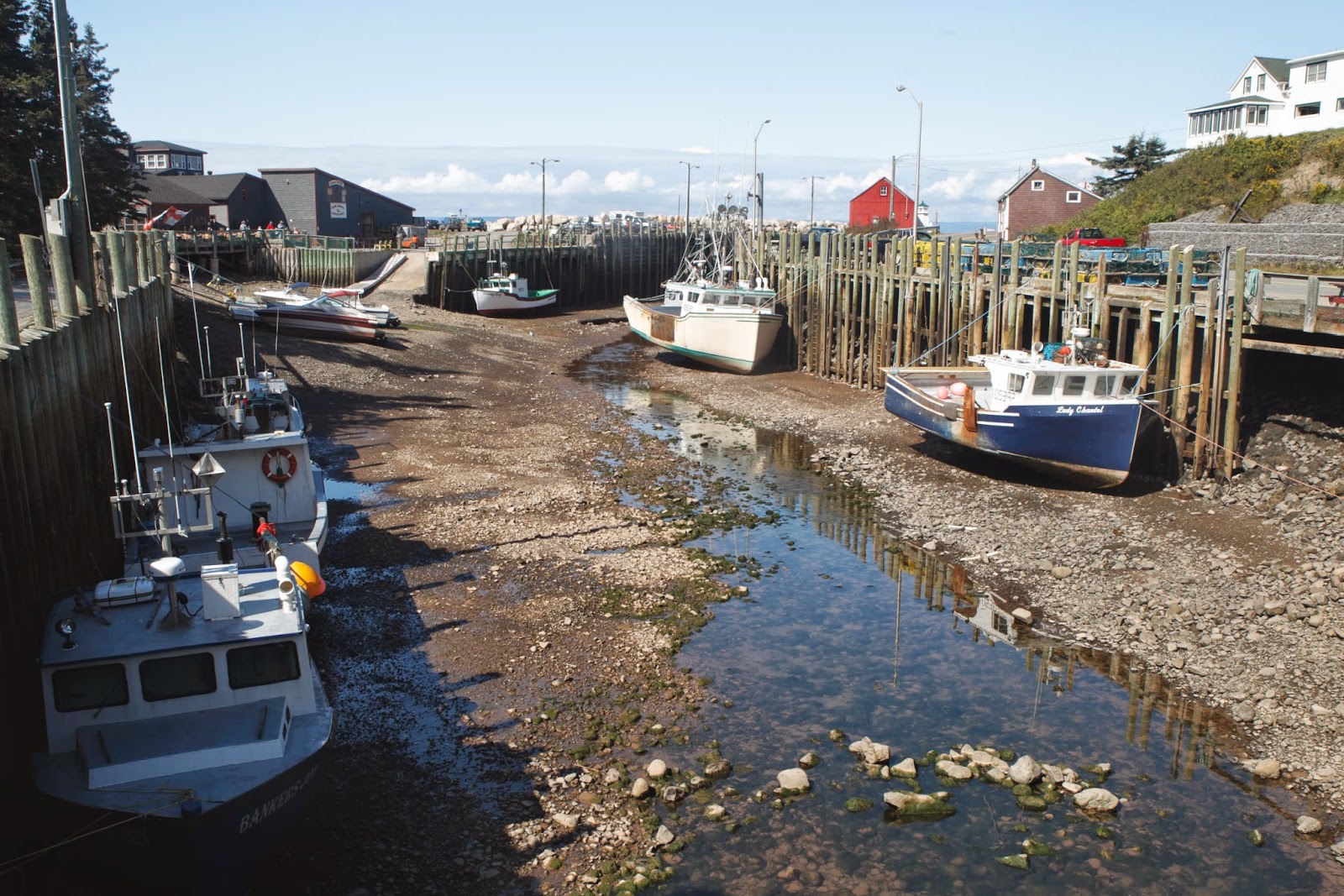HALIFAX
The capital of Nova Scotia and the city with the second largest natural harbor in the world is a must stop for anyone exploring the area. A walk along the harbor boardwalk is a great place to start and eventually you will pass by the Maritime Museum of the Atlantic.


The display and history of the smaller vessels used in the area along with a phenomenal collection of ship models is reason enough to stop. Two exhibits - one on the Titanic and another on the Halifax explosion are the biggest attractions. Halifax was the nearest major port to the Titanic sinking and as a result played a major role, especially in handling the victims of the tragedy. The Halifax explosion occurred on the morning of Dec 6, 1917 when two ships, one carrying wartime explosives, collided. The blast was the largest man-made explosion until the nuclear age and leveled most of Halifax, killing 2,000 people and injuring 9,000. The details leading up to it and the stories of the people and families who survived are fascinating and well worth the time to go through the displays in detail.
After the Museum a commercial tour of Halifax is a great way to learn about the city if you have not been there before. There are a variety of choices. A fun way, although with less information, is to take the Harbour Hopper.
These amphibious ducks will give you a view from the harbor as well as a land tour. The bus tours, however, will give you more complete and detailed information. There are double deckers as well as traditional busses. We decided on the land tour with a kilted Scotsman leader. One of the highlights is a trip to the Halifax cemetery where 150 Titanic victims are buried.
 |
| The Titanic victims burial site is arranged as if the prow of a ship. |
 |
The lead character in the film "Titanic" was based on an actual victim who is buried here.
|
PEGGY'S COVE
Varying legends tell of a small girl swept into the cove during a storm that destroyed her ship and everyone on it except her. Growing up in the village which adopted her she later married one of the inhabitants and the small village was eventually named after her. There are no supporting documents but one fact does remain - Peggy's Cove is a huge tourist attraction. It was much smaller than I anticipated with a small number of shops, fishing wharf, restaurant, and a lighthouse which is fairly photogenic.
 |
| Swissair Flight 111 crashed just off shore from Peggy's Cove killing every on board. A memorial to the victims is visible from Peggy's cove |
 |
| Glen Margaret just north of Peggy's Cove |
MAHONEY BAY
A quick stop here on the way to Lunenburg was necessary when I saw the three churches guarding the town.
LUNENBURG
Architecturally, Lunenburg is one of the most visually pleasing cities you can find.
The best attraction in town, after the architecture, is the Fisheries Museum of the Atlantic. There is enough to do here for an entire day with two floors of exhibits, a tidal touch tank, films, aquarium, and large fishing vessels parked outside. When you are hungry there is a great restaurant and bar attached.
Great shopping is found in the downtown section. Edie and I have found that in shopping situations it is best to go our separate ways. This spares her from my constant groaning when dragged into countless stores. I visited an art gallery and then found the Ironwork Distillery, a micro distillery that gave out samples of their products - and they had a lot of them so I spent a lot of time there. It is built in an old blacksmith shop that made ironworks used by the ships.
 |
| Every basement should have a mini still. |
BAY OF FUNDY AND ANNAPOLIS VALLEY
The Bay of Fundy side of Nova Scotia from Digby to Brier Island has something for everybody. Whale watching is big along with wine tours, hiking, kayaking, birding, and tides that can rise four stories in a matter of hours. Whale watching was very tempting but I decided against it since we had done this before and high winds had produced some very rough water. I regretted my decision however as I watched a zodiac pass Boar's Head while photographing the Tiverton Light house on Long Island. They had seen a lot of whales up close.
 |
Commercial fishing boat working off Boar' Head.
|
We visited two wineries - Gaspereau and Domaine De Grand Pre'.
Walking through the grape vines glass in hand while your guide pours you wine samples pulled from his apron was a great way to enjoy a tour.
Long Island and Brier Island are at the end of what is known as the Digby Neck. You have to really want to get to the end because it will entail two ferry rides to get there. The ferries run 24/ 7 but there is usually some waiting time involved. The area is isolated in places but the bird watching is usually great along with the whales and the constant unbelievable Fundy tides.
 |
Whale Cove on Digby Neck
Hall's Harbour, home of the Lobster Pound Restaurant, has one of the highest tides anywhere.
|















































































